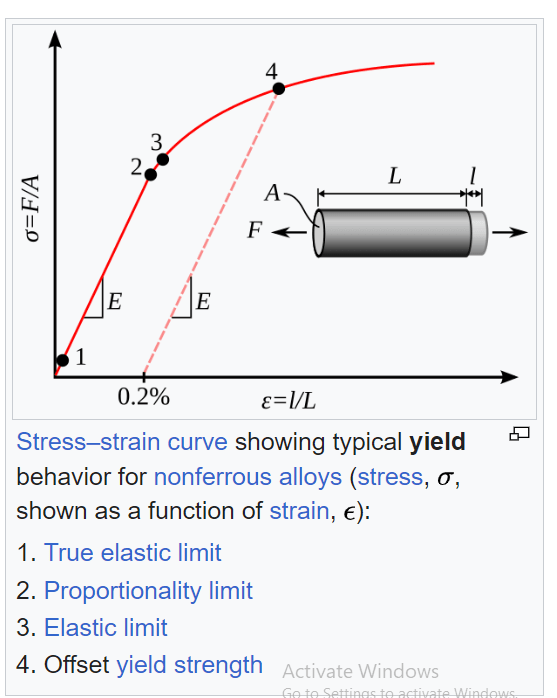Hello all,
I have done stress calculations for multiple years and have a good understanding of hoop vs longitudinal stresses for buried pipelines. Recently I have gotten involved with pipeline strain but I am struggling to understand two key things:
First, several codes talk about a 0.5% or 2% strain threshold. However what does 2% strain mean? If according to Hooke's law, strain = stress/Young's modulus, does 2% strain mean then that the stress state is limited to 0.02*Young's Modulus. For steel at 30,000,000 psi, this results in stress at about 600,000 psi (so that stress/Young's Modulus= 30,000,000 psi).
Second, is it appropriate to consider the strain in a combined sense? For example, the Von Mises criteria allows for combining inter planar stresses. Is it the combined interplanar stress which is then compared to the 2% threshold stated above?
I am thinking that the procedure is to calculate up all the individual stresses, sum then per Von Mises criteria, and provided that this doesn't exceed 2% of Young's Modulus, it is acceptable (assuming that 2% is used).
Sorry, just struggling to find any real world examples of strain calculations with the threshold whereas multiple for stress seem to exist.
I have done stress calculations for multiple years and have a good understanding of hoop vs longitudinal stresses for buried pipelines. Recently I have gotten involved with pipeline strain but I am struggling to understand two key things:
First, several codes talk about a 0.5% or 2% strain threshold. However what does 2% strain mean? If according to Hooke's law, strain = stress/Young's modulus, does 2% strain mean then that the stress state is limited to 0.02*Young's Modulus. For steel at 30,000,000 psi, this results in stress at about 600,000 psi (so that stress/Young's Modulus= 30,000,000 psi).
Second, is it appropriate to consider the strain in a combined sense? For example, the Von Mises criteria allows for combining inter planar stresses. Is it the combined interplanar stress which is then compared to the 2% threshold stated above?
I am thinking that the procedure is to calculate up all the individual stresses, sum then per Von Mises criteria, and provided that this doesn't exceed 2% of Young's Modulus, it is acceptable (assuming that 2% is used).
Sorry, just struggling to find any real world examples of strain calculations with the threshold whereas multiple for stress seem to exist.

